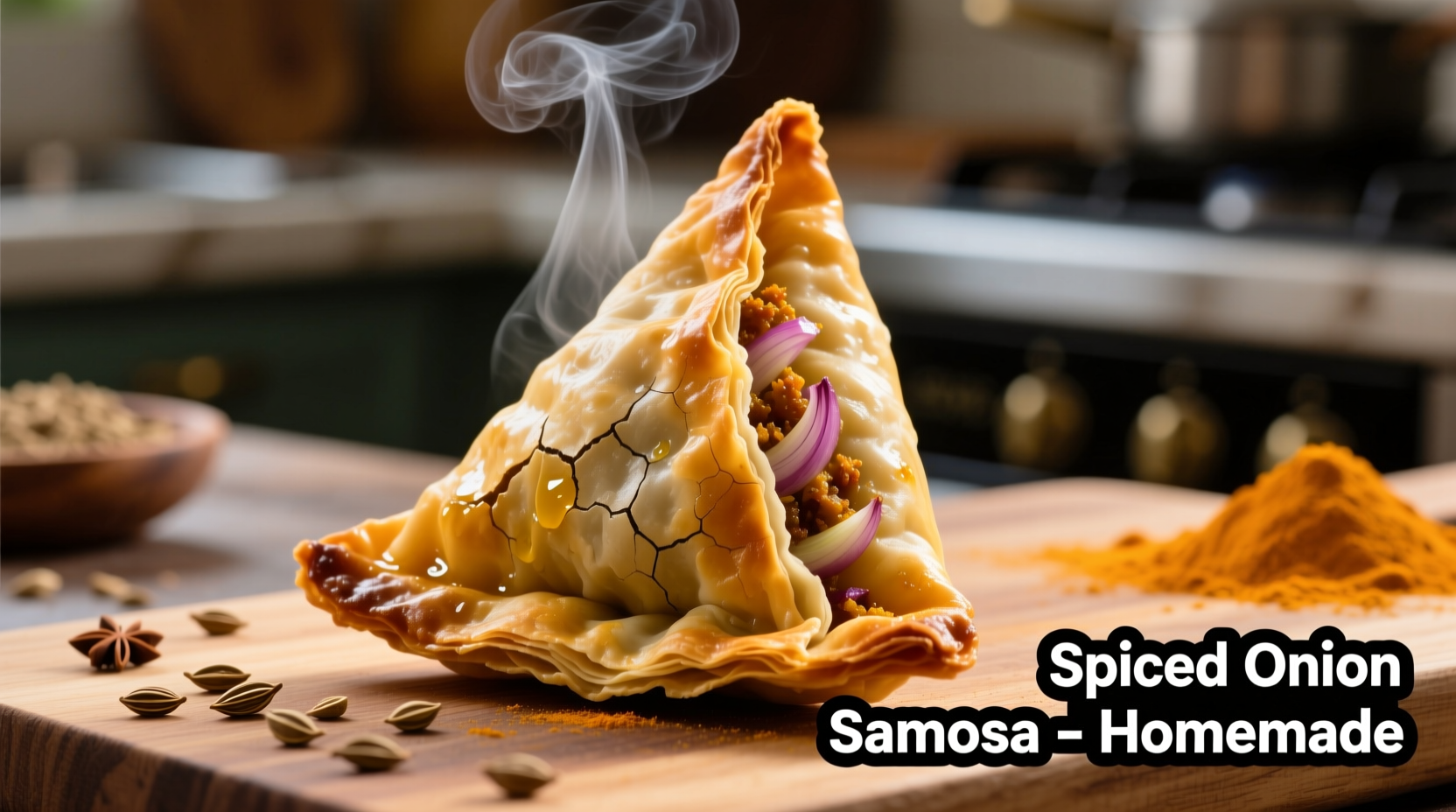Craving that perfect crunch with every bite? You've come to the right place. This guide reveals the authentic techniques for crafting onion samosas that rival your favorite street vendor's, complete with historical insights and practical tips that transform ordinary snacks into extraordinary culinary experiences.
The Evolution of Onion Samosas: From Royal Courts to Street Food
While samosas trace their origins to medieval Persian cuisine, the onion-filled variation became popular in India during the Mughal era. Historical records from 13th century Delhi Sultanate mention "sanbosag" pastries filled with minced meat and nuts. By the 16th century, Indian cooks adapted the recipe using locally available ingredients like onions, creating the vegetarian version we know today.
| Period | Key Development | Regional Variation |
|---|---|---|
| 13th-15th Century | Persian sanbosag introduced to Indian subcontinent | Northern India: Meat-filled versions for royal courts |
| 16th-18th Century | Vegetarian adaptations emerge | Deccan Plateau: Onion and potato variations develop |
| 19th Century | Street food popularity grows | Western India: Onion samosas become Mumbai street staple |
| 20th Century-Present | Global spread through Indian diaspora | Worldwide: Regional adaptations while maintaining core elements |
Essential Ingredients for Authentic Onion Samosas
The magic of onion samosas lies in the careful balance of simple ingredients. Unlike potato samosas which dominate restaurant menus, onion samosas showcase the humble onion transformed through proper technique. The key is using red onions for their natural sweetness when caramelized, combined with just the right amount of heat from green chilies.

Step-by-Step Preparation Guide
Perfecting the Dough
Create a pliable dough by mixing 2 cups all-purpose flour with 1/4 teaspoon salt, 3 tablespoons vegetable oil, and enough water to form a smooth ball. Rest for 30 minutes—this crucial step develops gluten structure for optimal flakiness. Professional chefs recommend adding a teaspoon of carom seeds (ajwain) to the dough, which aids digestion and enhances flavor.
Mastering the Onion Filling
The filling requires patience: slowly caramelize 4 large red onions with 2 tablespoons oil over medium heat until golden brown (about 25 minutes). Add 1 tablespoon ginger paste, 2 finely chopped green chilies, 1 teaspoon cumin seeds, 1 teaspoon coriander powder, 1/2 teaspoon turmeric, and salt to taste. The critical technique? Cooking the filling until absolutely no moisture remains—this prevents soggy samosas.
Folding and Frying Techniques
Roll dough into 6-inch circles, cut in half, and form cones. Fill with 1.5 tablespoons of cooled filling. Seal edges with water-flour paste to prevent oil leakage during frying. Fry in 350°F (175°C) oil until golden brown, turning once. The ideal temperature ensures crispness without greasiness—too hot and they'll burn; too cool and they'll absorb excess oil.
Common Mistakes and How to Avoid Them
Even experienced cooks encounter challenges with onion samosas. Understanding these context boundaries separates good from exceptional results:
- Mistake: Using yellow onions instead of red Solution: Red onions caramelize better and provide superior sweetness without added sugar
- Mistake: Overfilling the samosas Solution: Use no more than 1.5 tablespoons filling to maintain structural integrity
- Mistake: Frying at incorrect temperature Solution: Maintain consistent 350°F using a thermometer—fluctuations cause uneven cooking
- Mistake: Skipping dough resting time Solution: Always rest dough for at least 30 minutes to prevent shrinkage during rolling
Serving Suggestions and Variations
Traditional pairing includes tamarind chutney and mint-coriander chutney, but modern interpretations feature yogurt dips with roasted cumin. For authentic street food experience, serve immediately while piping hot. The texture contrast between crispy exterior and savory filling is most pronounced within 15 minutes of frying.
Regional variations worth exploring:
- Mumbai street style: Extra green chilies and lemon juice in filling
- Hyderabadi version: Incorporates dried mango powder (amchur) for tanginess
- Gujarati adaptation: Adds fresh cilantro and a pinch of sugar to balance flavors
Storage and Reheating Tips
While best enjoyed fresh, properly stored onion samosas maintain quality for 2-3 days. Cool completely before storing in airtight containers with paper towels to absorb moisture. For optimal reheating, use an air fryer at 350°F for 3-4 minutes—this restores crispness better than microwave methods which create sogginess. Freezing uncooked samosas works well; fry directly from frozen, adding 1-2 minutes to cooking time.











 浙公网安备
33010002000092号
浙公网安备
33010002000092号 浙B2-20120091-4
浙B2-20120091-4